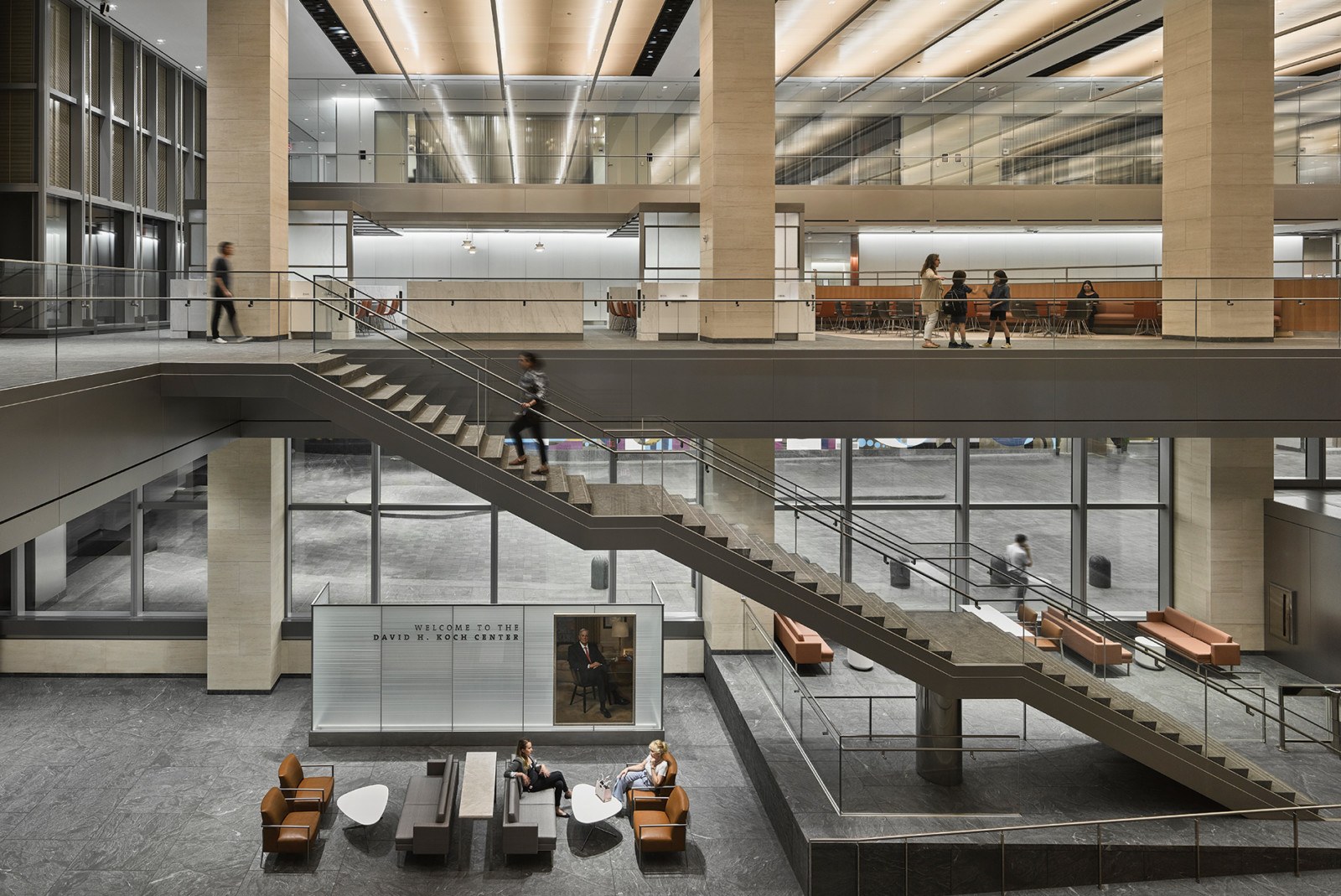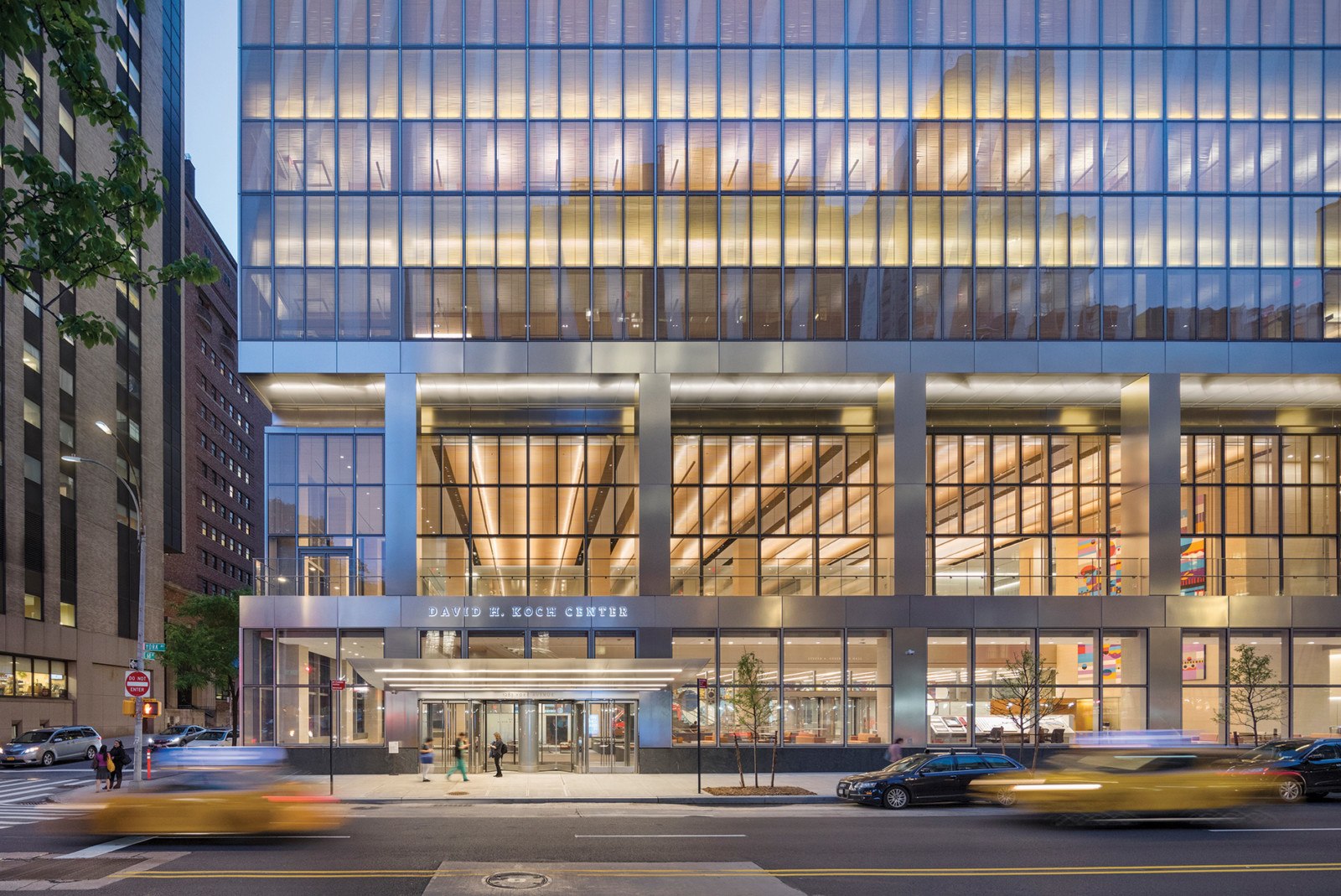ENR describes how HOK, Ballinger and Pei Cobb Freed collaborated with NewYork-Presbyterian to design a new ambulatory care center on Manhattan’s Upper East Side.
Excerpted from ENR:
Fitting a 17-story ambulatory care center in a thicket of hospital and medical facilities on Manhattan’s Upper East Side was only the first challenge for New York-Presbyterian Hospital. The design and construction team for the new David H. Koch Center, which partially opened April 30, had even loftier objectives: re-imagining the basic patient experience and making the facility highly adaptable for future advances in medical procedures, practices and technologies.
The result is an eclectic 740,000-sq-ft structure—named for business magnate, hospital board member and $100-million donor David Koch—that offers outpatient surgery, interventional radiology, diagnostic imaging, infusion services, [cancer care, digestive disease treatment] and an integrative health unit. Construction continues on its top five floors to complete the Alexandra Cohen Hospital for Women and Newborns in 2020.
The design uses city streets and natural light as orienting elements and has different staff and patient hallways. This helps patients avoid the typical hospital experience of wandering through endless corridors, says Amy Beckman, principal and senior project manager at HOK. “A lot of thought went into the choreography of movement so that patients are not faced with unnecessary decision making in a confusing setting,” she says. “The building suggests where you move to next.”
The team pushed to achieve those goals with a long-span structural system, tall floor-to-floor heights and minimal, optimal column placement. “We wanted to create clearer zones of unobstructed space, especially in the procedural areas,” Beckman says.
The new center also incorporates various elements that promote sustainability, resilience and long-term adaptability. … Even the curtain wall serves a purpose, with removable panels on one side of the structure to ease delivery and installation of future equipment and systems, according to Beckman. “We call it a zipper on one side of the building,” she says.
The building’s foundation butted up to neighboring sites, often with walls crossing property lines, requiring on-the-spot adjustments for caisson placement and beams to transfer loads.
Healthcare facilities built today need to anticipate how service models, equipment, building infrastructure and staffing requirements will change, Beckman says. “These buildings have 50 years plus of life.”

